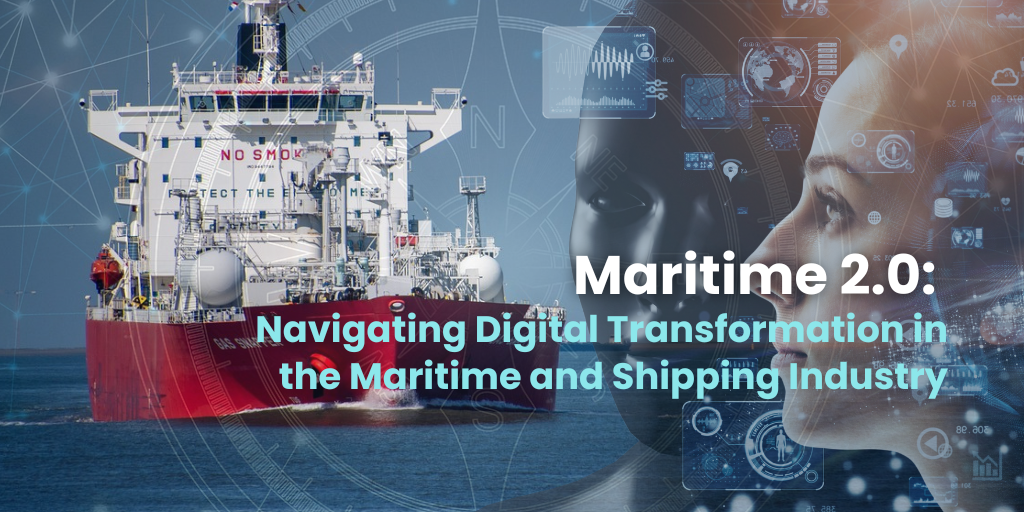The recent developments of technologies such as Artificial intelligence and automation are becoming highly relevant for the maritime industry. These developments also contribute to streamlining the existing maritime operations and open up several business opportunities.
Do you want to know what is the major benefit that the maritime and shipping industry has obtained from the digital transformation? It has become easier to entail risks as well as expenses.
With the help of this blog, I want to share the fascinating advent of digitalization in the maritime industry. As a passionate observer of technological advancements, I have witnessed some of the revolutionizing changes in the way port operates, ship sails, and global trade flows.
It is important to remember that “digital transformation is not about technological innovation, it’s about optimizing positive changes in the existing maritime operations.”
Escalation of the data-driven decision making
You can consider data as one of the main pillars of the maritime industry. Businesses have started to harness the power of data analytics as well as artificial intelligence to optimize their operations.
This digitalization has also helped the maritime industry to cope with the recent surge of environmental consciousness. Do you know that the maritime industry is responsible for approximately 12% of global marine pollution? This fact might come as a shock to you, but unfortunately, it is true.
I am quite intrigued by the fact that data-driven decision-making helps maritime associates to make informed decisions about fuel consumption, cargo handling, route planning, and more major maritime operations. This not only enhances operational efficiency but also reduces expenses while having the least negative environmental impact possible.
Rise of autonomous shipping
Let us imagine a world where a ship will navigate the open waters, without having to take the help of a human captain. However, this futuristic thinking can be turned into a possibility with the help of autonomous technology.
I have been associated with the maritime industry for over two decades, and I can proudly say that our maritime sector has come a long way to create autonomous ships that can operate effectively and safely. You might think that I am bluffing about this technology, as manual navigation is required.
Let me give a brief about autonomous technology in the maritime industry.
The implementation of autonomous technologies is altering ship operations in the marine sector. AI, machine learning, and sensor improvements enable autonomous vessels to navigate, observe, and make choices without human assistance. This innovation ushers in a new era of shipping with increased safety, effectiveness, and cost savings.
Advanced technologies are used by these ships, including computer vision, machine learning, and automation systems, to study their environment and make judgments on their own. Autonomous shipping offers improved voyage planning, decreased human error, and increased safety.
Maritime digitalization is streamlining global trade affairs
A large portion of global trade affairs is dependent on the maritime sector. As an established maritime entrepreneur, I have suggested to many fellow maritime enthusiasts to seize the opportunities offered by the port operations. The particular reason behind this circumstance is that the ports are the lifelines of global trade.
In this maritime 2.0 era, it has become possible to streamline basic operations like container handling, and security by implementing automated systems and smart technology. Ports are adopting digitalization in various ways, such as with automated cranes, robotic container loaders, and blockchain-based systems for tracking and documentation. This development not only boosts productivity but also lays the door for more seamless international commerce flows.
I like to think that “The marine industry’s adoption of technology has brought it the closest it has ever been to sustainability.”
Integrating the Internet of Things (IoT) into maritime operations
The Internet of Things (IoT), which connects numerous maritime assets and enables smooth communication between them, has made it to the high seas. IoT devices are changing the face of the industry, from sensors tracking ship performance to smart containers tracking cargo. Stakeholders may proactively resolve issues and streamline the supply chain with real-time data on weather conditions, engine performance, and cargo status.
You don’t have to be tech-savvy to understand the importance of technology in maritime operations. With the increased reliance on digital advancements, it is safe to say that the number of business opportunities in the maritime industry will skyrocket within the next few years.
Cybersecurity: Safeguarding the digital seas
I’ve covered several advantages of incorporating cutting-edge technologies into nautical operations. Yet there are a few issues regarding the digitalization of the maritime industry, I want to draw your attention to.
The marine industry is faced with new issues as a result of the rising reliance on digital technologies, notably in terms of cybersecurity. Ships are potential targets for cyberattacks as they become more networked and reliant on digital equipment. Therefore, to protect vital infrastructure, data integrity, and employee safety, strong cybersecurity measures are essential. To reduce these dangers, industry players are putting money into cybersecurity solutions, doing routine audits, and educating the public.
Conclusion
While concluding this blog, I have realized that it has become quite evident that the maritime and shipping industry is in the process of a profound digital transformation. This amalgamation of data analytics, automation, as well as other digital measures, has resulted in reshaping the sector’s landscape, offering new opportunities and challenges alike.
The maritime sector is well-positioned to traverse the digital waves and reimagine the future of international trade by embracing these innovations.
Henceforth, whether you are a maritime associate or an enthusiast, keep an eye on the transformations brought by the Maritime 2.0 era, as it sails into new vistas. Undoubtedly, the maritime and shipping sector’s future is bright, and I, for one, am eager to find out what is in store for us on this digital journey.


